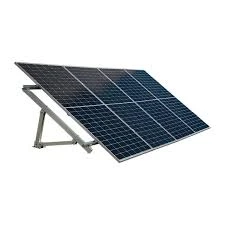Solar Energy Solutions for Your Backyard Shed and Garden Projects
Harnessing Solar Power for Your Shed
In an era where sustainability and energy efficiency are paramount, solar power has emerged as a popular choice for many homeowners. One of the most versatile and practical applications of solar technology is in sheds, whether they serve as storage spaces, workshops, or recreational areas. Utilizing solar power for your shed not only reduces your dependence on grid electricity but also promotes eco-friendly practices. This article will explore the benefits, components, installation process, and maintenance of integrating solar energy into your shed.
Benefits of Solar Power for Your Shed
1. Energy Independence By installing solar panels on your shed, you can generate your own electricity. This is particularly beneficial for sheds located in remote areas where grid access may be limited or unreliable. With solar power, you can keep your shed functional year-round without worrying about power outages.
2. Cost Savings While there is an initial investment in solar panels and associated equipment, the long-term savings can be substantial. Solar power reduces or eliminates your electricity bills, allowing you to allocate those funds to other projects or enhancements for your shed. Moreover, many regions offer tax incentives or rebates for installing solar power systems.
3. Environmentally Friendly Solar energy is a clean, renewable source of power. By utilizing solar panels, you will significantly reduce your carbon footprint and contribute to the global effort against climate change. Furthermore, your commitment to sustainability can inspire others in your community.
4. Versatility Solar power can be used for various applications in your shed. Whether you need to power lights, tools, heating, or cooling systems, solar energy can be harnessed to meet your specific needs. This flexibility allows you to customize your shed’s functionality based on your lifestyle.
Components of a Solar Power System
A typical solar power system for a shed consists of several key components
1. Solar Panels These are the most visible components and are responsible for converting sunlight into electrical energy. Depending on your energy needs, the size and number of panels will vary.
3. Batteries (optional) If you want to store excess energy generated during sunny days for use at night or during cloudy weather, you will need battery storage. This ensures a steady power supply and maximizes the benefits of your solar installation.
solar power for shed

4. Charge Controller This device regulates the voltage and current coming from the solar panels to the batteries. It prevents overcharging and maintains optimal battery health.
5. Mounting Hardware Proper installation requires durable and reliable mounting hardware to secure the solar panels to the shed’s roof.
Installation Process
1. Assess Your Energy Needs Start by determining what you will power in your shed. List the devices, lights, and any appliances you plan to use and estimate their power consumption.
2. Choose Equipment Based on your energy needs, select appropriate solar panels, an inverter, and batteries if necessary. Research reputable brands and consider efficiency ratings.
3. Install Solar Panels Begin by installing the solar panels on the roof of your shed, ensuring they face south (in the northern hemisphere) for maximum sun exposure. Mount the panels securely to withstand high winds and weather conditions.
4. Wiring Connect the solar panels to the inverter and, if applicable, to the battery storage system. It’s crucial to follow all safety guidelines and local regulations during this process.
5. Test the System Once installed, test your solar power system to ensure everything is functioning correctly. Monitor the power output and check for any issues.
Maintenance of Your Solar Power System
Maintaining your solar power system is essential for longevity and efficiency. Regularly clean the solar panels to remove dust, leaves, or snow that may obstruct sunlight. Periodically check the wiring and connections for signs of wear or damage. If you have batteries, monitor their condition and performance, replacing them as needed.
Conclusion
Integrating solar power into your shed is a smart investment that offers numerous advantages. From boosting energy independence and reducing costs to promoting sustainability, the benefits are compelling. By carefully planning, selecting the right equipment, and maintaining your system, you can create an energy-efficient haven that aligns with modern eco-conscious living. Embrace the sun's power and transform your shed into a sustainable, functional space that serves your needs for years to come.
-
String Solar Inverter: The High-Efficiency Solution for Smart Solar EnergyNewsJul.14,2025
-
Revolutionizing Rooftop Energy with the Power of the Micro Solar InverterNewsJul.14,2025
-
Power Independence with Smart Off Grid Solar Inverter SolutionsNewsJul.14,2025
-
On Grid Solar Inverter: Powering the Future with Smart Grid IntegrationNewsJul.14,2025
-
Monocrystalline Solar Panels: High-Efficiency Power for the Future of Clean EnergyNewsJul.14,2025
-
Bifacial Solar Panel: A Smarter Investment for Next-Generation Energy SystemsNewsJul.14,2025







